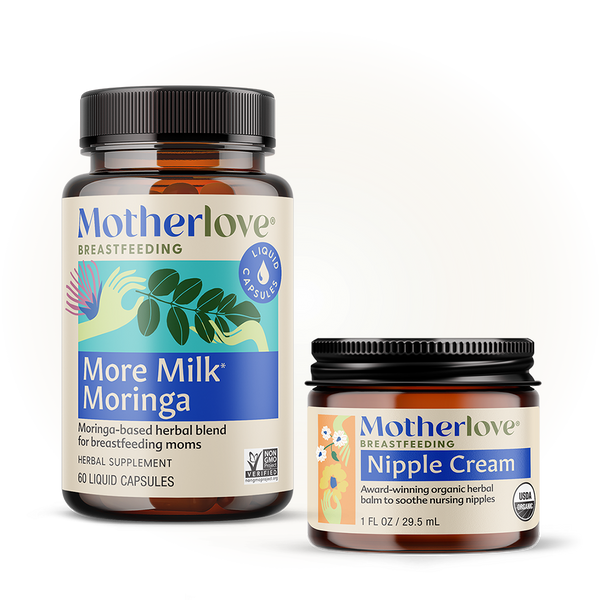Written by Wendy, IBCLC
When learning to clean your pump parts it’s easy to feel overwhelmed! But cleaning your pump parts is really important, because although breast milk is clean and hearty, if it’s left on pump parts too long, bacteria can begin to grow, which is definitely not something you want. Don’t worry, though! Keeping your pump parts clean is something that becomes less stressful and time-consuming the more you do it, and it’s simpler than you think.
Here’s the low-down on what you need to know:
STEPS FOR CLEANING PUMPS
Sometimes when you read about how to care for your pump, it sounds like there are so many rules. The thing is, there are only a few basic things you need to do to keep your pump clean.
Before Pumping
- Wash your hands for at least 20 seconds with soap and water, making sure to get in between your fingers and under your fingernails.
- Wipe the surface where you will be pumping with soap and water or a disinfectant. If you are using a shared pump at work, you should wipe down the pump itself with a disinfectant.
After Pumping
- Do a quick assessment of your pump parts. Sometimes mold builds up in the tubing or other parts of your pump kit. If you see mold, you should replace those parts.
- Take your pump kit parts apart. Any part of your pump that gets breast milk on it should be cleaned (again, because of potential bacteria build-up). That includes the flanges, valves, membranes, connectors, and bottles.
- Now it’s time to wash your pump parts. Start by rinsing any milk droplets off of your pump kit parts. After that, you’ll want to wash the parts. You have a two options here:
- A) Wash By Hand: When washing your pump parts by hand, there are few tips to keep in mind. You’ll want to use a separate basin in your sink so that the pump parts don’t make contact with your day-to-day dishes. You’ll also want to use a separate sponge or brush for this job. Wash your parts according to your pump manufacturer’s guidelines. In terms of drying, you’ll want to air-dry the parts on a clean surface, such as a paper towel or fresh towel. Don’t use the dish towels you use for your family’s dishes for this job.
- B) Use The Dishwasher: Some pump parts are dishwasher safe (yay!), but you’ll need to check with your pump manufacturer to confirm. If you use the dishwasher, make sure to place any small parts in separate space (like the mesh compartment in the silverware rack) so nothing gets lost. If the parts come out damp, dry them on a paper towel or fresh towel.
Pro Tip:
If you have an older baby who you are pumping for several times a day, you may not need to wash your pump parts between every single feeding. Some lactation consultants recommend storing your pump parts in a Ziploc bag in the fridge between pumping sessions, and washing the pump parts once per day. This way, any residual milk left on the pump parts is kept fresh between feedings. Again, this method is best for babies who are over three months and healthy, and you should be cleared with your doctor first.
DO I NEED TO SANITIZE MY PUMP PARTS?
Many moms wonder how necessary sanitizing their pump parts is. If you have an older baby, it may not be necessary to sanitize your pump parts daily, if you are washing them after use. However, there are certain circumstances where sanitizing parts is important.
According to the CDC, there are several specific instances where sanitizing pump parts is vital:
- If your baby is under three months
- If your baby is premature or in the NICU
- If your baby has a weakened immune system because of illness or medical treatments (e.g., cancer treatments)
You can consult with your medical provider as to how often sanitizing is necessary.
HOW TO SANITIZE PUMPS
Boil
You can boil any parts that are safe to boil in a small pot of water. Fill the pot with water, bring the water to a boil, and boil for five minutes. Parts will be burning hot, so use tongs to remove them, or wait for parts to cool. Air dry the parts on a paper towel or fresh towel.
Sanitize In Your Dishwasher
If your pump manufacturer recommends it, you can use your dishwasher to sanitize your pump parts. Follow their instructions carefully. Most dishwashers have a “sanitize” setting.
Use A Bottle Sterilizer Or Microwave Sterilizer Kit
There are several commercially produced sterilizer systems that are either standalone appliances or that can be used with a microwave. Follow all instructions carefully and make sure your pump manufacturers recommend these methods.
THE BOTTOM LINE
Sometimes reading a list of instructions and rules like these can feel daunting. The truth is, if you take it day by day, one pump session at a time, cleaning your pump parts really isn’t that complicated. After a while, this stuff will come routine and you won’t even need to think about it anymore.
Whenever possible, get a partner or other helper to assist with the washing of your pump parts. Yes, you’re the only one who can pump and nurse your baby, but your helpers can do everything else. Take them up on any offers. Pumping, nursing, feeding, and caring for your baby is a lot of work and you are not meant to do this alone.



